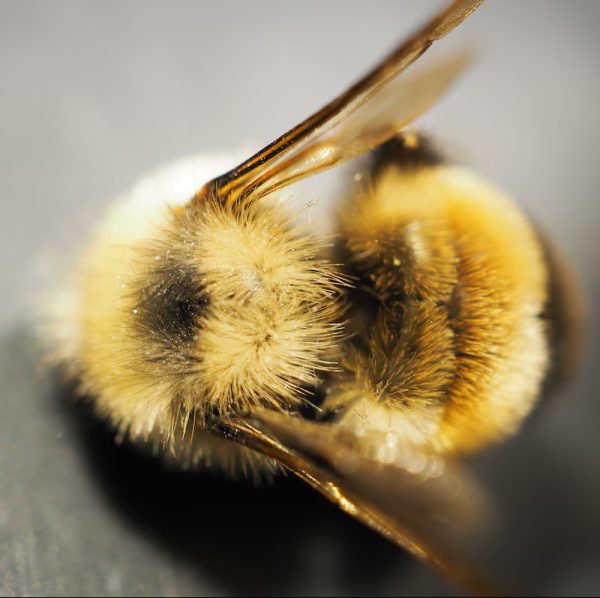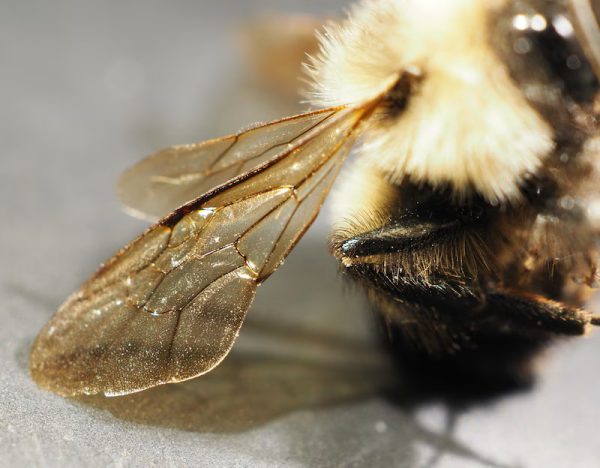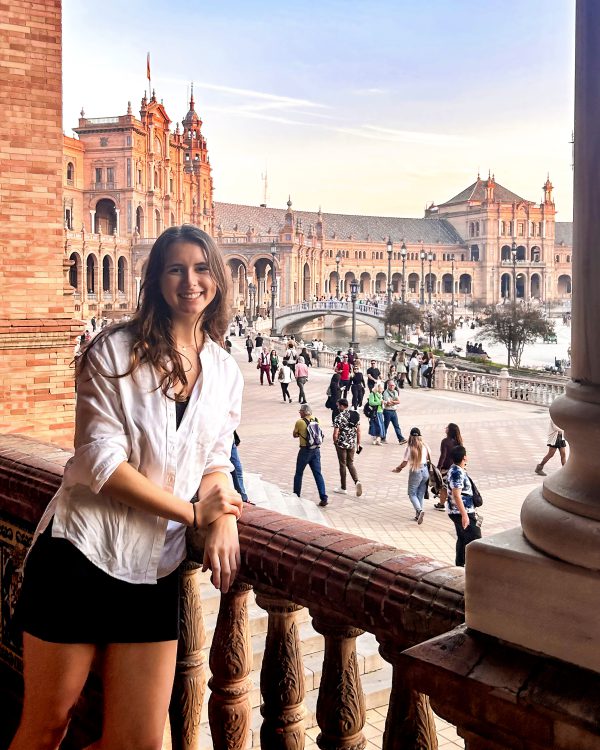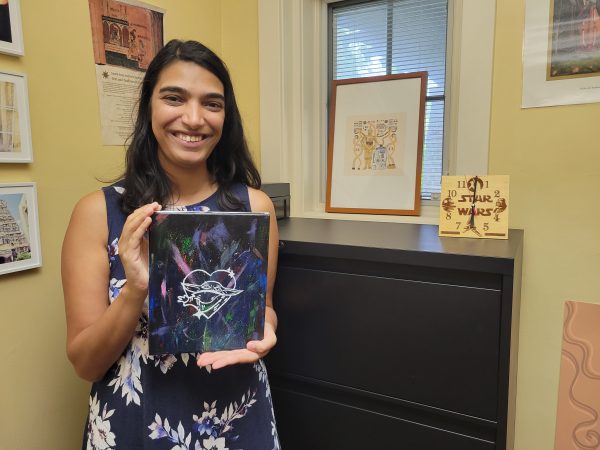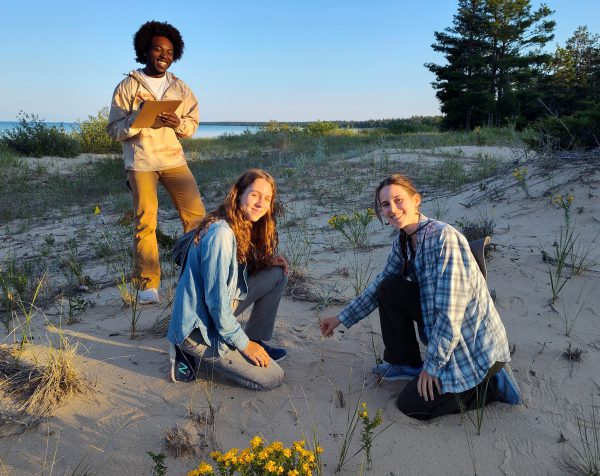
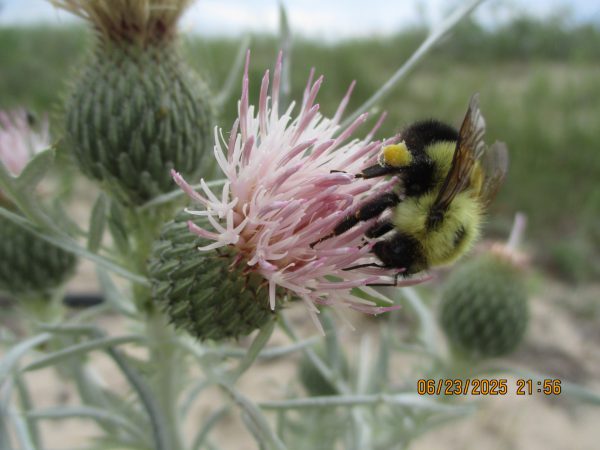
Surrounded by the waters of Lake Michigan, between the state’s Upper and Lower Peninsulas, three Kalamazoo College students spent their summer with Professor of Biology Binney Girdler, studying a small species of plant that fulfills big roles.
Caleb Jenkins ’26, Willow Hayner ’27 and Mairin Boshoven ’25 devoted their days to researching and protecting Pitcher’s thistle, a rare and threatened yet important plant on Beaver Island, where the students spent a couple of months at a remote hub for scientific activity: Central Michigan University’s Biological Station.
Pitcher’s thistle grows only on the shores of the western Great Lakes, Jenkins said, where it began to spread thousands of years ago as a huge glacier traveled northward, depositing minerals and sand.
“As the glacier melted, it gave us our Great Lakes,” Jenkins said. “From that, Pitcher’s thistle established roots deep within the Earth. As it grows, it collects more and more sand as the sand drifts and storms wash up deposits, assisting dune grasses in building dunes. Those dunes have developed into areas like the Sleeping Bear Dunes and Wilderness State Park.”
Studies in Wisconsin have shown that entire swaths of Pitcher’s thistle have been wiped out by an invasive weevil called Larinus planus, which destroys the plant’s seeds. Beaver Island is unique because researchers have yet to find any evidence of the weevils there. Their absence helps make the island an ideal spot for the pollinators that rely on Pitcher’s thistle for food in the early spring before much else blooms. It also provided Jenkins, Hayner and Boshoven with a perfect environment for their research, conducting tests and measurements that contribute to the plant’s conservation.
Even the deer on Beaver Island, whose growing numbers are hurting populations of other plants, seem to be having less impact on Pitcher’s thistle.
“The seedlings of the Pitcher’s thistle tend to be the most vulnerable,” Boshoven said. “The deer might step on a few or bite them, but the plants tend to be very resilient. Humans would be much more of a threat to the plant’s population than deer.”
CMU’s Biological Station is a nucleus for scientists and students from across the country. Hayner said K’s representatives were collecting data during the day while evenings brought talks from visiting researchers from organizations like the National Oceanic and Atmospheric Administration (NOAA) and the Michigan Natural Features Inventory.
“These groups often gave lectures on their research, and it was amazing to meet them and learn about their work,” Hayner said. “We also got to work in Binney’s lab, right next to the shores of Lake Michigan. As an added bonus, we were able to participate in the end-of-summer open house and poster show to present our research to the public.”
Much of the team’s daily work involved close observation—very close observation.
“There was a lot of crawling involved,” Jenkins recalled with a laugh. “We’d be hunched over the plants in the sand, and when people walked by asking what we were doing, we’d pop our heads up like groundhogs and say, ‘We’re measuring plants!’”
By the end of the summer, the group had recorded data on nearly a thousand seedlings, some barely a half-centimeter tall. Beyond the data, the project connected the students with the island community, whose residents deeply value Beaver Island’s natural plant and animal systems and appreciate research on species vital to the island’s ecology.
“You don’t have to convince anyone there why conservation matters,” Boshoven said. “They already know. One of my favorite moments was sharing our findings at the open house and seeing how excited people were about the research. It felt like conservation was happening in real time.”
All three students credit Girdler for fostering an environment that balances challenges with encouragement.
“Binney never pressured us just to produce results,” Jenkins said. “I could lay out what I’d learned and what I understood and say, ‘Here’s where I am.’ She was more than happy to meet us in the middle. That level of understanding is an extra bit of humanity you usually don’t get in academic settings.”
“She met us where we were and encouraged us to keep going, even when things went wrong.” Hayner added. “She’s an outstanding mentor. I learned so much just being part of her lab and hope to continue working with her on data analysis this year.”
For Boshoven, the experience has been transformative.
“My first summer there opened my eyes to what fieldwork could be,” she said. “Now I know I want to go to grad school not just for the degree, but for the process of doing the research. It really taught me how and why I want to structure my work in the future.”
Boshoven expects such enthusiasm to spread to the next generations of K students.
“The program Dr. Girdler has built is so well thought out,” Boshoven said. “Academically, it’s a great experience; she will follow it through with you all the way to publishing research, which is impressive for undergraduates. It has made me an exponentially better researcher. On the other hand, it was also just a great time.”
Jenkins said the experience solidified his own dream of becoming a conservation biologist.
“Anyone who knows me knows I’m a plant guy,” he said. “If I can spend the rest of my life studying plants and teaching people about them, I absolutely will.”
Hayner, too, found the project has influenced her long-term goals.
“I’m not totally sure where I’ll end up, but I know I want to keep doing fieldwork,” she said. “This showed me how passionate I am about plant ecology.”
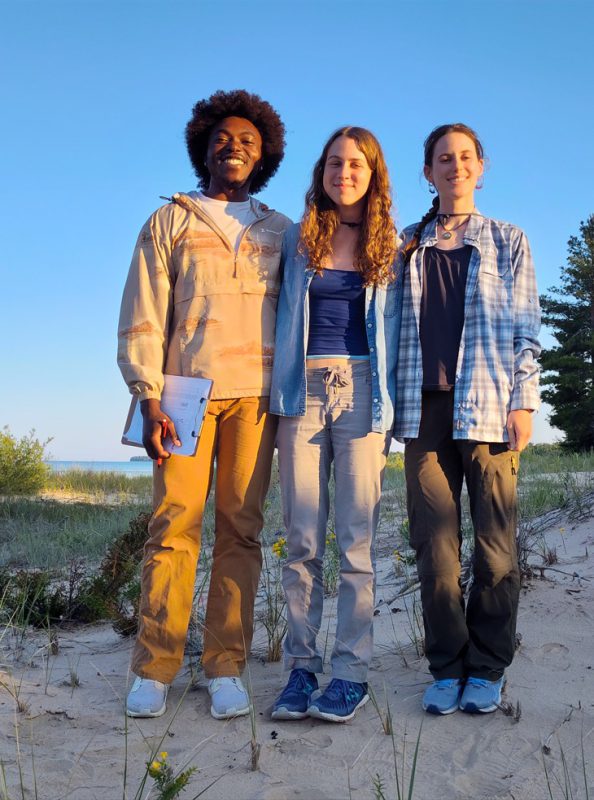
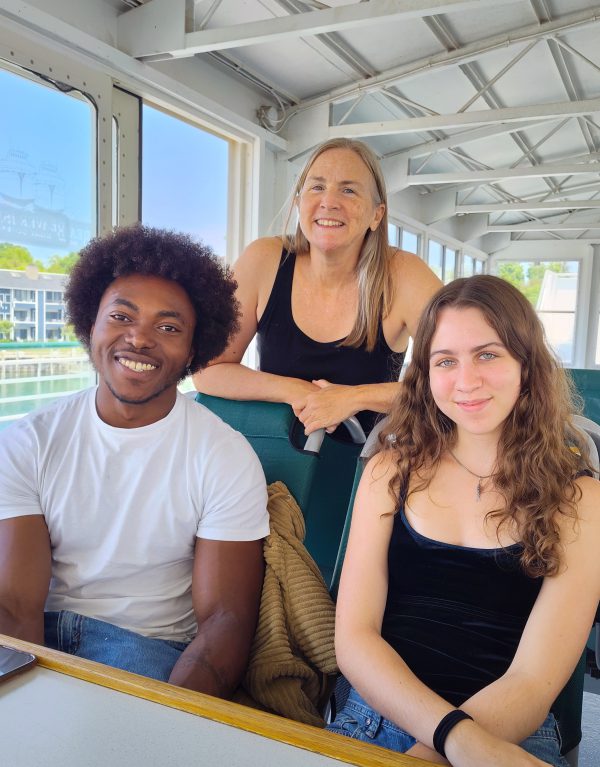
Professor Proud of Students, Beaver Island Research
Professor of Biology Binney Girdler said she’s proud of all of her students who perform research, especially Jenkins, Hayner and Boshoven, who did so in such a remote place.
“From Kalamazoo, it’s a three-and-a-half-hour road trip followed by a two-hour ferry ride,” she said. “There is one small grocery store on the island, one gas station where gas is $6 a gallon and four restaurants. But on the plus side, the students had 300 feet of sugar sand Lake Michigan beach at their disposal, and the lake to go jump in whenever they wanted. I was incredibly proud of each of them for their creativity and dedication. Each student had their own piece of the puzzle. I was really impressed with what a great team these three scholars made. Even though they each had ownership of a different part of the project, they coordinated their work well so that they traded jobs and supported each other through challenges, especially when I was off-island. My students were professional and engaging, and community members told me what a great job they did presenting.”
What is Pitcher’s Thistle?
- Named after: Zina Pitcher, a U.S. Army surgeon at Fort Brady and an amateur naturalist. He discovered the plant in the 1820s along Lake Superior.
- Scientific name: Cirsium pitcheri or CIPI for short.
- Range: Native only to the dunes of Lakes Michigan, Huron and Superior.
- Status: Federally threatened in the U.S., federally endangered in Canada.
- Ecological role: Stabilizes sand dunes with deep roots; blooms early to feed pollinators such as bees, monarchs and hummingbirds.
- Biggest threat: Shoreline development and a seed-eating invasive weevil, Larinus planus.
- Why Beaver Island matters: It’s one of the few places with no reports of weevil damage, offering a refuge for healthy populations.
- Kalamazoo College connection: Professor of Biology Binney Girdler and her students have studied the species for years, contributing to its conservation.







